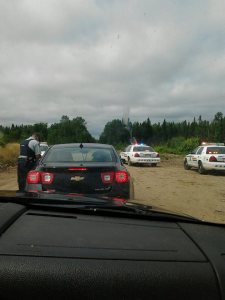
NovemBer 12, 2015: Second Submission
FROM: Kent County Chapter Council of Canadians
(author Ann Pohl, Chairperson)
On Saturday October 31st, at the KAIROS forum on fracking and human rights issues, I happened to meet Commissioner Cheryl Robertson, who was in attendance for that portion of the forum. Ms. Robertson confirmed for me that the Commission is not yet informed on the two matters I address in this submission, which relate to the first and fourth points in the Commission’s mandate.
Civil Rights Violations are a Solid Barrier to
Obtaining Social License for Fracking
The material in this section is extracted from a memo submitted by our Chapter to the Civilian Review and Complaints Commission for the RCMP, who are investigating RCMP conduct during the 2013 anti-fracking protests here in Kent County. The serious nature of many underlying issues and complaints about RCMP conduct is underscored by the fact that, midway into this investigation, the Commissioner for this civilian oversight body filed his own complaint with the RCMP. This text below was forwarded to the Civilian Commission on September 25, 2015, from our Kent County NB Chapter of the Council of Canadians. It was written to respond to a specific request for submissions from the Civilian Commission – on a matter not directly relevant to your Commission on Hydraulic Fracking. For your convenience, the text below has been slightly edited. Should you wish to refer to the original version for context, this is the link. Here, then, is an account of some of the civil and political human rights violations experienced during the anti-fracking protests in 2013.
The Civilian Review and Complaints Commission for the RCMP acknowledges hearing from many witnesses and complainants who expressed that the conduct of the RCMP during protests against fracking had led to a lack of faith and trust in the police force…
It is very clear to us that we became targets of a public relations war. From 2010 on, the Government of New Brunswick was determined to shove deep shale gas industrial development down the throats of rural New Brunswickers. This meant we had to accept the new style of hydraulic refracturing – called “fracking” – which is clearly dangerous. Communities across the province were in an uproar over this. There was and is no evidence that there are any real benefits to the communities that get fracked, but initially the provincial government used simple bluster and positive assertion to try to convince the public about the economic benefits and safety of deep shale gas fracking. As the truth started to come out, especially in peer-acclaimed research on benefits, risk, and hazards found in the New Brunswick Chief Medical Officer of Health’s Recommendations Concerning Shale Gas Development in New Brunswick (September, 2012), it became evident that the government was losing its public relations war.
By 2013, it became patently obvious that corporate and public officials (both federal and provincial) were concerned only with promoting climate-killing “extreme” petrochemical industrial development. The pro-fracking elite was desperate. They needed a new public relations strategy, and decided to demonize those of us who wish to protect the environment and community health from fracking. Their public relations war was tweaked a few times, and ultimately re-aimed to focus on the danger of indigenous people and their environmentalist allies.
As mentioned below, we can even identify the time period when the focus telescoped from saying we were all dangerous, to zeroing in on indigenous protectors as the primary targets. The “wrongs” committed in 2013 by officials during the anti-fracking actions are many – most severely: removals, arrests, charges, conditions, and sentences. These were often done in disregard for the pain inflicted, or the cultural and spiritual world of the protestors and protectors…
1. It is apparent that the RCMP have not been educated on the common knowledge about the Peace & Friendship Treaties, in which there was no surrender of land or resources by the Mi’kmaq People. It was evident as well that the RCMP have not benefited from cultural competency or anti-oppression training.
2. The issues at stake were basically a civil matter, where a corporation wanted to do something in and around communities that opposed this activity. People have a right to non-violent protest against such activity, a right that is guaranteed under the Canadian Constitution as well as the various international human rights accords to which the Government of Canada is signatory. The people involved in protest and protection resistance were well aware of their rights. This is why there were so many elders, women and children involved in the actions. No one expected the things that happened.
3. The “Crown” failed in its obligations under Section 35 of the Canadian Constitution and additional legal precepts established by the Supreme Court of Canada and international law. The “Crown” in this case is the Province of New Brunswick, because management of natural resources falls under provincial jurisdiction.
4. The underlying purpose of all this activism was first and foremost to protect the water. This is a poor region where there are few actual jobs. Most people of all cultures here make their livelihood at least in part from the land, rivers, ocean, and forests. Water is essential for the survival of people and these natural resource areas. People were concerned that the loss of good fresh water would mean having to leave the area where their family and cultures have lived for many generations, and in the case of the Mi’kmaq People since time immemorial. There appeared to be no understanding by the RCMP that protection of the water was the underlying issue for all community members involved in resisting the corporation’s activities, and a core issue for the extended communities supporting these activists.
5. The Government of New Brunswick contracts the RCMP as the NB provincial police force. Because the force is first and foremost a federal one, Indigenous people in particular have established expectations and protocols regarding the RCMP. To a certain extent, so do all Canadians. To enforce its pro-fracking policy, the New Brunswick provincial government exerted extreme influence and pressure on the RCMP to “break” the non-violent resistance of Kent County environmental protectors and protestors. This alone was the major factor creating the alienation between community members and the force. We knew that the RCMP were being used politically to advance a corporate/government agenda we opposed. None of the authorities cared to consider the relationship damage they were creating.
With this mandate, the RCMP operated as a military-style force to implement the government policy that shale gas development would go ahead despite community uproar across the province. The criminalization of protestors and protectors was a choice made by RCMP commanders who instructed the forces on the line.
6. During the initial days of the corporation’s activity in Kent County (June 3 – June 20 2013), the RCMP appeared to be equally concerned with criminalizing both non-Indigenous and Indigenous activists, as they faced non-violent resistance from a united front of Acadians, Anglophones, Mi’kmaq, and other allies. However, by June 21, which is ironically National Aboriginal Day, the focus of the RCMP switched to total concern with Indigenous activists. The Civilian Commission for RCMP complaints heard from various individuals (both non-Indigenous and Indigenous) about this biased conduct, related to June 21st and the following weeks and months.
7. Ours is a tightly networked rural area where most people know or are related to each other in some way, across all three founding cultural communities. Many of the protestors and protectors also have extended family members employed in the RCMP. Informally through community networks, it is our impression that many officers with local Kent County RCMP detachments were not in agreement with the way that the force was commanded to operate during these months. The voices and reasons of these local peace officers, as to why they disagreed, should have been heard and considered fully. That is the way good community policing is done.
8. The events of October 17 2013 were the most obvious breach of people’s constitutional rights. Looking at an affidavit by Mark Lenehan, prepared by legal representatives for SWN Resources Canada on October 9 2013 (this has already been submitted to the Commission), we see quotes from an RCMP operational commander at the protest site. Sgt. Robichaud tells Mr. Lenehan that going into the 134 camp with Lenehan to serve papers re: the civil action injunction would amount to “inciting a riot” and “igniting a powder keg.” Ann Pohl is one of the people specifically named in the injunction related to this affidavit. Prior to October 13 2013, when Ann visited the camp, she was assured by RCMP on duty at the police blockades (located at either end of the protest area) that she could enter the area without risking arrest. Specifically, she was told it was not the RCMP’s job to enforce a civil action injunction.
Despite all the apparent tolerance and understanding by RCMP on duty during the weeks leading up to the October 17 commando raid on the protest site, we all saw what happened that day. On October 17, the RCMP’s callous disregard for human rights and safety of people was a stark contrast to their easy-going attitude in the weeks before. This deeply hardened community attitudes against the force.
9. There are a number of specific issues of great concern relative to the October 17 dawn RCMP commando raid on the protest camp. Just a few are mentioned here:
♦ A sacred gift of Tobacco was provided by the RCMP to some of the Mi’kmaq protectors the night before the raid. Everything that happened after was a complete violation of the significance and protocols associated with this gifting.
♦ As it was being launched, all Kent County roads leading to the site were closed EXCEPT the roads that go from Elsipogtog First Nation. To many people, this suggests that the RCMP were actually baiting First Nations people to come into the fracas that the RCMP troops were creating at the site, so that it would appear to the media and the outside world that the only people involved in the protest were Indigenous.
♦ Two very different stories were used to explain the rationale for the police assault. Early that morning, the RCMP brought in trucks equipped with powerful public address systems. These were used to proclaim the civil law injunction as a pretext for the invasion. Yet, hours later, the RCMP commented they had to invade the protest camp because they had “intelligence” about a build-up of weapons on site, and feared things were going to turn very dangerous. As there was almost no verifiable evidence of a weapons buildup, both excuses contradict what RCMP said a week earlier (see Lenehan affidavit). Dishonesty undermines public faith in the trustworthiness and credibility of our public servants.
♦ The burning of the police cars was major news across the country. We are all convinced that it was not done by anyone who was part of our united movement to protect the environment. Among all Kent County protestors and protectors, and our allies, there is a wide-spread belief that agents working for some arm of the RCMP or a sister federal force are responsible for the burning of the police cars.
Your Commission is well aware of this view, from complaints and comments you have heard: unusual RCMP activity immediately before the fires appeared; querying what accelerant could actually cause the fires to start so quickly; failure by RCMP to protect the crime scene of the burned cars; why the cars appeared to be lacking standard police communications equipment; the possibility that the cars were deliberately decommissioned at a specialty shop the week previous; the cars were left at the road for so long after the burning; knowledge that such provocative acts have been done before by the RCMP (eg, at the G-20 protests, etc.); and many more points.
The evidence points to this conclusion: the RCMP burned their own cars, or hired someone to do so, in order to affect public opinion. This is a kick in the teeth to the entire community, making those of us involved in non-violent resistance to protect our environment for future generations look like hoodlums.
♦ Many people continue to face charges and other legal and financial consequences as a result of this RCMP action. For some, this has been devastating. Some people pleaded guilty as they had no financial means to defend their rights through the justice system.
At the heart of all the issues related to policing during these protests is ethics and fairness, as well as the use of tired old military strategies such as “divide and conquer.”
The RCMP have consistently attempted to insinuate that there are significant differences between those of us involved in the protests and protection actions, and that these differences follow cultural boundaries. There is no truth to this. It is an undeniable fact that greater than 90% of Kent County residents are united in our determination to protect the natural environment that sustains us all. Local environmental groups and communities did a research survey in the summer of 2013 to ascertain this fact. The findings were subsequently reported to the Kent County Regional Service Commission, who on July 18 2013 passed a resolution by a vote of 16-1 to ask the provincial government to stop the corporate exploration, until Kent residents can be provided with “a guarantee for our environment and we can inform citizens about what’s going on.”
We are now, in fact, more united than ever in our collective determination to protect this territory we share in “Peace and Friendship.” Some of the community members being interviewed by the Civilian Commission‘s investigators were led into a field of inquiry about divisions between activists based on cultural heritage. We sincerely hope that these questions do not reflect biased attitudes by Civilian Commission personnel. We hope these questions were asked only to determine the relative validity of information provided by the RCMP to the investigators and staff of the Civilian Commission. But, we have learned not to trust.
That said, we have clearly stated above that we note that Indigenous protestors and protectors were handled in a much rougher and meaner manner by RCMP than non-Indigenous ones. Most of the issues that arose over this period in regards to the Indigenous protectors and protestors are addressed in the final Report of the Ipperwash Inquiry, submitted by The Honourable Sidney B. Linden (Inquiry Commissioner) on May 30, 2007 to the Government of Ontario.
Echoing specific points highlighted in that report, it was clear from the conduct of RCMP officers here in Kent County that the members of the force were never briefed on why people were engaged in these protests, occupations, and actions of non-violent civil resistance. RCMP were also not made aware of the significance of the “colour of right” (another point highlighted in the Ipperwash Inquiry report), in regards to the sincere motivations of all protestors and protectors. People engaged in actions were making a good faith assertion of their right (even obligation) to defend their water, land, air, communities, and family health, because the threat being posed to these things would result in their irretrievable loss. It is the fault of the provincial government that Kent County neighbours and allies felt this desperate, but the RCMP needs to be a peace force for all the people, not for the government.
The most important fact for your NB Commission on Hydraulic Fracking to retain from this entire excerpt above is that we have learned the hard way not to trust anything GNB says on this topic. We know that the RCMP work for the Government of New Brunswick, as do you, as did the discredited Louis LaPierre, and as do many civil servants who have participated in the ongoing attempt to force us to accept something that we have rejected.
Through all the above (and much more not in that brief summary), we the Peoples of Kent County stand united in our non-violent, unbending determination to protect our homes, our communities, the health of our families and neighbours, our water, our air, our soil, and the rest of the natural environment that sustains us all. We do so at great cost and sacrifice for many of us, because we want all our grandchildren to have a future here.
We believe that GNB should abandon its retrograde love affair with the very substances that are killing our planet, which have brought our global climate to the precipice of ecological apocalypse. GNB should stop spending our money on deals for petroleum and other related industries, and commissions such as this one (etc.). GNB should massively invest in upscaling of renewable energy research, development and innovation.
The Provincial Government’s Duty for Free, Prior and Informed Consent from Indigenous Peoples
This is the most basic and fundamental requirement of any evaluation about whether or not deep shale gas extraction can be permitted in this region. The previous sentence is all the more true because there is no mention of surrender of resources or land in Mi’kma’ki under the Peace & Friendship Treaties, which are the legally binding agreement documents governing title and shared use of the land in the province of New Brunswick. In short, the Government of New Brunswick holds no true title to the land it has leased to shale gas extraction companies, and it has never consulted properly with First Nation communities on the issuance or terms of these leases.
SWN Resources Canada made this severely cautionary observation in their memo, dated December 22, 2014, addressed to Michael Pearson in the Premier’s Office: “…(T)he necessity for the Crown to effectively execute its obligations to the province’s First Nations under the government’s Duty to Consult Policy remains a primary concern for us… the ultimate responsibility rests with the Crown and we believe the government needs to do more to advance this file.”
Please do not follow the proponent’s (SWN’s) suggestion that the 2011 GNB Duty to Consult Policy sets out a reasonable path, which simply needs better implementation. That policy is wholly inadequate.
Section 35 of the Canadian Constitution specifies the obligations of the Crown to Aboriginal Peoples, and on matters of natural resources the “Crown” is the provincial government. These obligations mean that valid consultation processes are an essential precursor to any infringement on Aboriginal treaty, original, or unceded, territories. In regards to First Nations in specific, this is well-established law in Canada. Several important Supreme Court of Canada (SCC) cases uphold and augment the law on this section of the Constitution.
To address this fourth point of the five conditions that are to be met to lift the moratorium, any process your Commission conducts, or recommendations you develop, will not be adequate. The Government of New Brunswick must understand and implement a “Free, Prior and Informed Consent” (FPIC) process for consultation with the Indigenous Peoples of this region.
The first place you need to go to understand this, and what is meant by “FPIC,” is the United Nations Declaration on the Rights of Indigenous Peoples (UNDRIP). The Government of Canada is signatory to this Declaration, but under former Prime Minister Harper’s regime this was a long time coming. It only happened because Canada was shamed into it both domestically and internationally. The Harper government was ideologically opposed to recognizing Indigenous Peoples’ human rights. It actively promoted Canadian public acceptance of this corporate-based goal, leading to the totally militarized relationship that currently exists between the governments of Canada, and indigenous earth protectors and their environmentalist allies. Through policy, act, law, and covert means, the Harper government enlisted the active support of the RCMP and other state security forces to promote their agenda of repression and oppression. This government did so despite judicial reprimands from the Supreme Court of Canada and massive civil society protests. When the Harper government finally signed the Declaration, it raised specific objections to the text.
On October 18 2015, Canadian voters, including record numbers of Indigenous Peoples, rejected the Harperist vision of a Canada that valued, above all, “Old Stock” Canadians and regressive fossil-fuel corporate agendas. We are now in a new era of Canadian politics. It seems there is interest in restoring Canada’s reputation as a land where fairness, kindness, decency, and respect for diversity are highly valued as social objectives. The newly elected government of Canada under Prime Minister-elect Justin Trudeau has pledged to fully implement the UNDRIP:
“When I say that we must complete the unfinished work of Confederation, I mean that Canada needs a renewed, nation-to-nation relationship with Aboriginal communities. A relationship based on recognition, rights, respect, co-operation and partnership. One that is rooted in the principles of the United Nations Declaration on the Rights of Indigenous Peoples. One that is guided by the spirit and intent of the original Treaty relationship, and one that respects the decisions of our courts… Reconciliation starts with recognizing and respecting Aboriginal title and rights, including Treaty rights. A Liberal government will do just that. Not only in accordance with Constitutional obligations, but also with those enshrined in the UN Declaration on the Rights of Indigenous Peoples…”
To proceed, as New Brunswick seems to be doing, to ignore the huge “elephant in the room” – the issue of Indigenous Rights – is mind-boggling idiocy. This approach is so far out of line with the reality of 2015, one can only wonder: in what century is GNB stuck? New Brunswick has had its head in the sand for far too long, in far too many ways. There is no point continuing in this vein.
To reiterate, reading UNDRIP in tandem with the Treaties, the Canadian Constitution, and relevant SCC decisions, makes it clear that your Commission cannot undertake FPIC. FPIC is the responsibility of the Crown under domestic and international law, and cannot be undertaken by a commission of inquiry such as yours, which has no mandated power to dialogue or negotiate directly on behalf of the Crown.
What your Commission can do is take the time to:
-
understand where, why, and how these things have been done in the wrong way in New Brunswick up until now;
-
learn about how they can and must be done in a proper way; and,
-
report back to GNB as soon as possible that it will be impossible for your Commission to report on that portion of your mandate, while taking care to include in this “report-back” what you have learned during your inquiries into points 1 and 2 immediately above.
In regards to the matter of consultation with Indigenous Peoples, this would be the only option for accountable, transparent, and responsible action on your part.
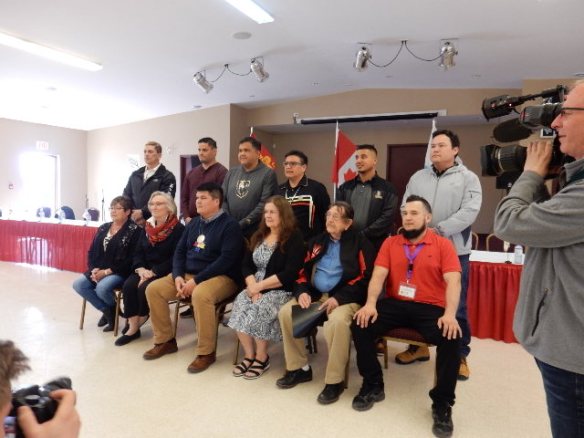
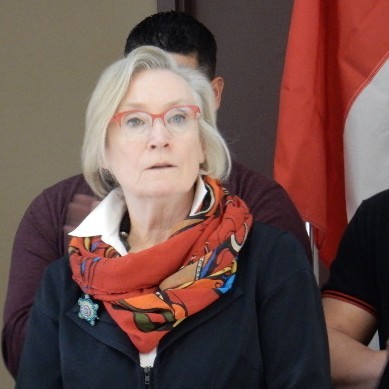


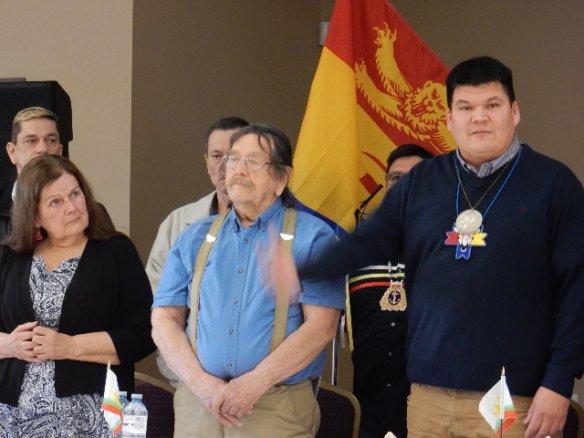


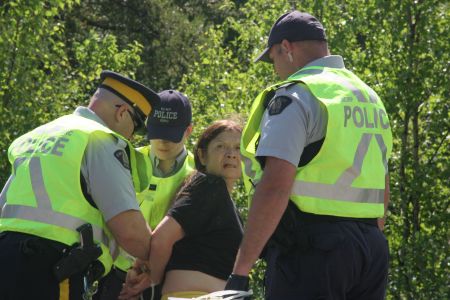
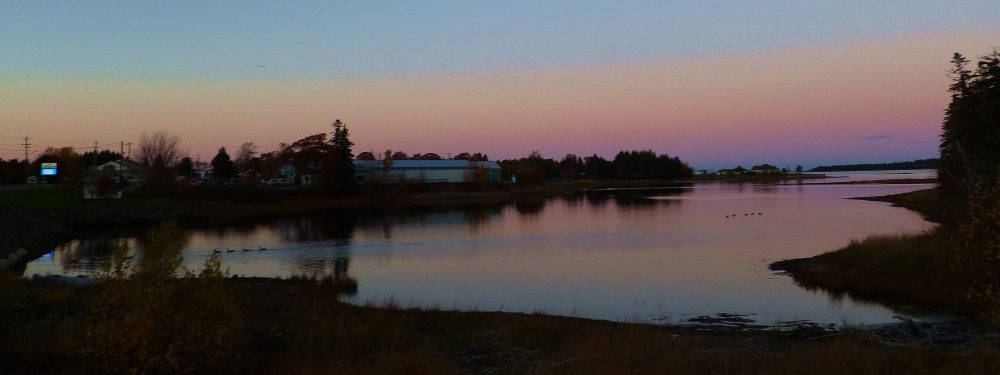

 process is incredibly capital and water-usage intensive, It contributes terribly to global climate issues due to fugitive methane releases, flaring, and the carbon footprint of the industrial practices of drilling, transporting, etc. On top of that, this form of deep fracking has proven to have very low productivity after just the first year. When the wells become too unproductive to merit more fracks, they are no longer used. Most governments have not demanded a guarantee for close-down in the contracts with proponents. Sometimes wells get capped off properly, but these may remain hazardous unless monitored continuously. There are many time-bombs in aging frack plays, because the cost of proper decommissioning and monitoring is greater than the profit margin supports.
process is incredibly capital and water-usage intensive, It contributes terribly to global climate issues due to fugitive methane releases, flaring, and the carbon footprint of the industrial practices of drilling, transporting, etc. On top of that, this form of deep fracking has proven to have very low productivity after just the first year. When the wells become too unproductive to merit more fracks, they are no longer used. Most governments have not demanded a guarantee for close-down in the contracts with proponents. Sometimes wells get capped off properly, but these may remain hazardous unless monitored continuously. There are many time-bombs in aging frack plays, because the cost of proper decommissioning and monitoring is greater than the profit margin supports. portrayed in a very negative manner. Completely missing from this biased document is what we actually did for four years to protect the water and environment here in Kent County NB and why we did it. Also, the document suggests we were all dangerous and inclined towards violent protest.
portrayed in a very negative manner. Completely missing from this biased document is what we actually did for four years to protect the water and environment here in Kent County NB and why we did it. Also, the document suggests we were all dangerous and inclined towards violent protest. These suits are simply corporate violation of human rights. To those directly named, they cause alarm, depression, trauma, anger, and much more. In the broader community, they create panic and confusion for those who are affiliated with the named individuals through organizations or actions. In almost all cases, the suits amount to empty bullying. Few are taken to conclusion, primarily because corporations know they would lose with their inflated and untrue assertions. In
These suits are simply corporate violation of human rights. To those directly named, they cause alarm, depression, trauma, anger, and much more. In the broader community, they create panic and confusion for those who are affiliated with the named individuals through organizations or actions. In almost all cases, the suits amount to empty bullying. Few are taken to conclusion, primarily because corporations know they would lose with their inflated and untrue assertions. In  In a follow-up new story on CBC,
In a follow-up new story on CBC,  In this submission, we have not touched on all the problems in Canada’s current national security legislation, policies and programs. As mentioned, only last week we accidentally learned of this consultation process deadline. There are certainly dozens of issues we would like to highlight, but shortness of time makes that impossible. For now, suffice it to say we endorse anything sent in by any chapter of the Council of Canadians, the national office of the Council of Canadians, or from KAIROS, Voices-Voix, or the Canadian Section of Amnesty International.
In this submission, we have not touched on all the problems in Canada’s current national security legislation, policies and programs. As mentioned, only last week we accidentally learned of this consultation process deadline. There are certainly dozens of issues we would like to highlight, but shortness of time makes that impossible. For now, suffice it to say we endorse anything sent in by any chapter of the Council of Canadians, the national office of the Council of Canadians, or from KAIROS, Voices-Voix, or the Canadian Section of Amnesty International.






